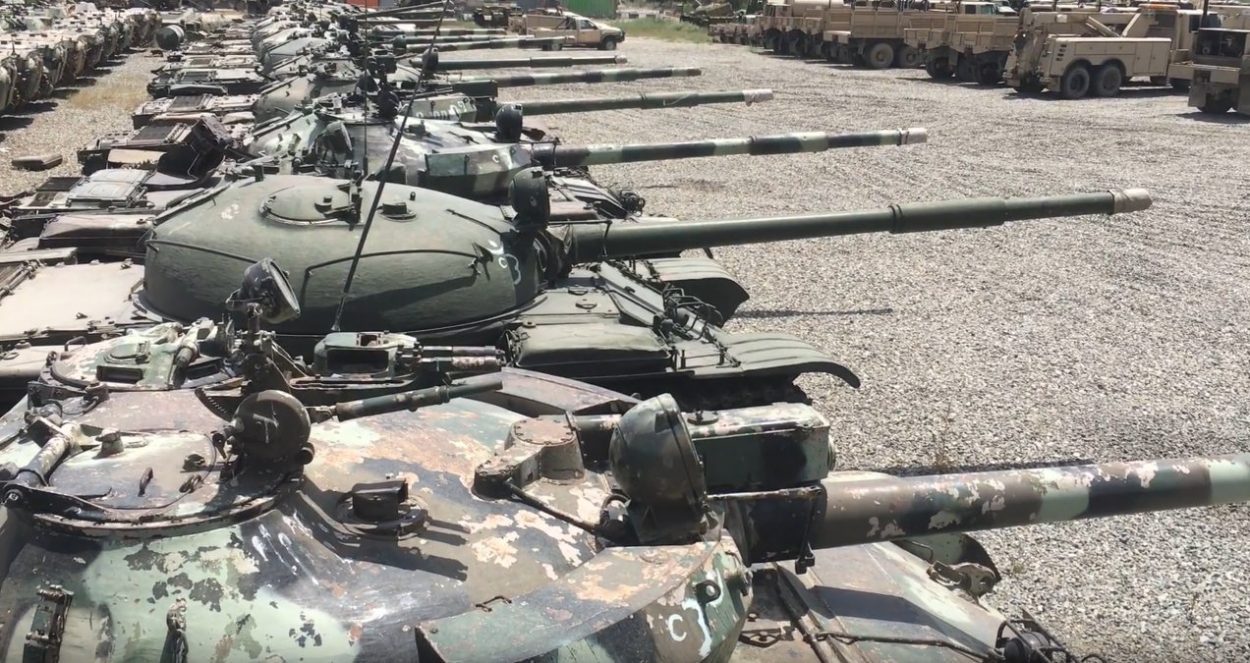In a secret location in Ukraine, inside a massive warehouse, just a few kilometers from the frontlines, Russian Tanks are being rechristened.
Several Western-made tanks like the US-made Abrams, the German-made Leopard 2, the British Challenger 2, and even the French AMX-10 RC, up to some extent, seem to have taken over the news headlines in recent weeks following the announcement of their provision to Ukraine by the US, German and French governments.
However, the biggest donor of tanks to Ukraine is none other than its invader: Russia!
Ukrainians are operating repair shops across the country near frontlines where what were once Russian tanks are now being turned into Ukrainian.
The British daily newspaper, The Guardian, recently visited one such warehouse, where several Russian armored vehicles are being repaired, operated by an unspecified engineering company in partnership with the Serhiy Prytula Charitable Foundation.
The Ukrainians won these tanks and other armored vehicles currently being repaired at the warehouse as trophies of battlefield successes after pushing out Russian forces from certain regions.
However, the trophies are not always acquired in tip-top condition.
For instance, a T-72B3 was brought into the facility by the 54th brigade from the eastern Donetsk region four weeks ago. It was directly struck on its turret, and its firing system was also damaged. However, personnel at the facility are working on getting it running as soon as possible.
The tank reportedly had remains of the possibly dead Russian soldiers inside them.
“I don’t know, I suppose so. There were arms and legs in it. Lots of blood,” said Anatoly, one of the personnel at the facility, when asked if the Russians died in the tank.

The Hub Of Repairs
Ukrainian officials acquired most of the advanced Russian armored vehicles during their surprise northern counteroffensive that witnessed tremendous success, forcing a hasty withdrawal of Russian troops from the Kharkiv region.
“It was like walking into a big, big shop where you can walk through and say, ‘I will have this one, and this one,'” said Bohdan Ostapchuk, who is leading tank refurbishment for the Prytula Foundation.
For instance, in September last year, Kyiv’s forces, during their counteroffensive in the Kharkiv region, captured their first T-90M ‘Proryv,’ one of Russia’s most advanced main battle tanks deployed in its special military operation in Ukraine.
Says it's the first documented T-90 captured in Kharkiv Oblast! ??????? 3 more images below pic.twitter.com/aufxJkqGmZ
— Ukraine Will Win (@tomaburque) September 18, 2022
Apparently, this T-90 was abandoned by its crew after an attack. Less than two months later, the Ukrainian army reportedly fielded T-90M against the Russian forces.
However, the same mistake was not repeated during the Russian withdrawal in the southern Kherson region before December, during which Russian forces conducted an orderly retreat. Nonetheless, Kherson remains a healthy supply spot for older-model vehicles.
For example, Anatoly pointed out an armored personnel carrier brought in by Ukraine’s 46th airborne brigade from Soledar, the eastern Ukrainian city recently captured by Russia, which was probably built between 1982 and 1987.
Likewise, a Soviet-era Shturm S model anti-tank missile carrier is in the facility, which bears the O sign of the Russian marines on its side. It was reportedly rendered un-operational after passing over a mine near Vuhledar in the Donetsk region and was abandoned by its Russian owners.

There is also a Soviet-era T-62, probably built in the 1970s, brought back by the 128th mountain brigade from Kherson three months ago during Ukraine’s counteroffensive.
“This old tank is no good for war,” said Anatoly, pointing to the T-62. “So we have cut off the top of it, the turret, and we are going to turn it into an evacuation vehicle that can pull heavily armored tanks when they get stuck.”
Ukraine Refurbishing Russian Military Equipment
There have been 30-50 people working at this facility at any point, seven days a week, under the looming threat from Russian forces who can identify and destroy it anytime.
Likewise, several private companies in Ukraine have set aside their usual businesses. They have taken up the work of refurbishing the captured Russian military equipment, including tanks, armored vehicles, missile systems, etc.
These operations are usually funded through donations from organizations like the Prytula Foundation, which has invested around USD 2,40,960 in the facility visited by The Guardian.
So far, the facility has put seven tanks, a command vehicle, a Hurricane rocket system, a multiple rocket system, an infantry transport vehicle, and several armored vehicles back into the battle.
These tanks and other weapon systems have been sent to some of Ukraine’s deadliest battle zones, including Bakhmut, Kramatorsk, Luhansk, and Svatove.
- Contact the author at tanmaykadam700@gmail.com
- Follow EurAsian Times on Google News




